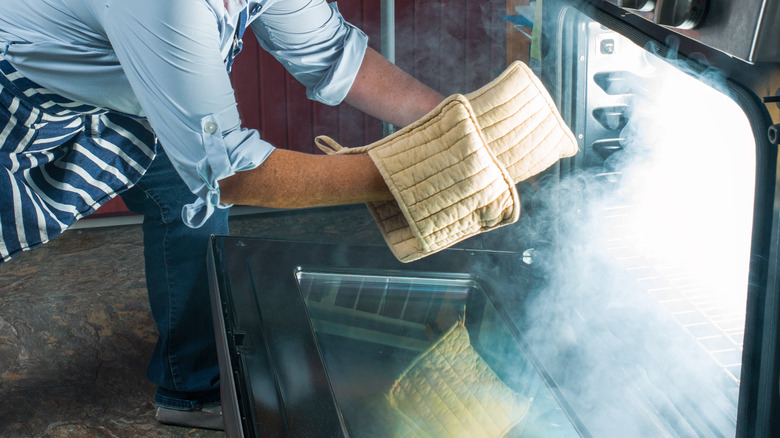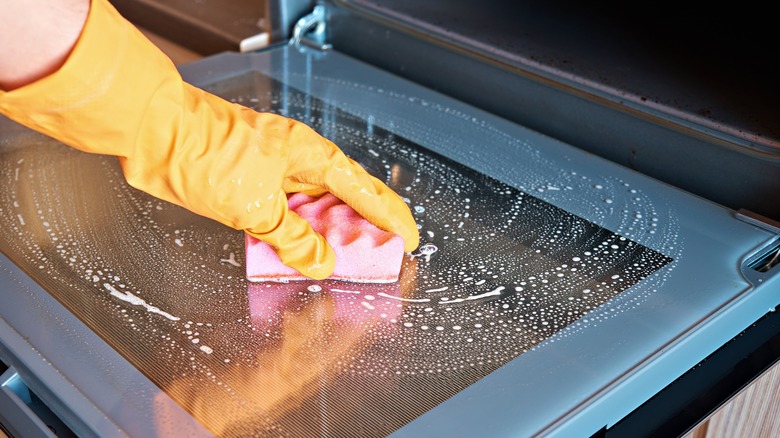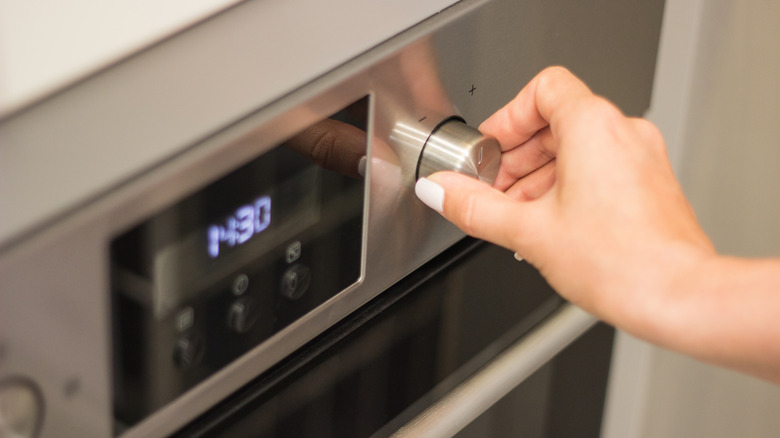Scraping Melted Plastic From Your Oven Is Easier Than You'd Think
The problem of space in the kitchen is real for many people. That might mean that your oven pulls double duty as both a place to cook bacon and an additional storage option in the off hours. At current, my oven is the home for my vast archive of baking sheets (cooling racks in the broiler, naturally). If you're like me, it's a common mistake to completely forget your oven's dual role until after you've already preheated it to 425 degrees. If you've used that space to store Tupperware or any other plastic kitchen items, chances are the result is a nasty pile of melted chemicals that smells awful and looks even worse.
The first thing to know is that you should stay calm. Scraping that plastic out of your oven is not only possible — it's easier than you think. For most ovens, you can just cool down the plastic with ice to solidify it, then use a sharp tool to scrape most of it off. You'll need little more than everyday kitchen tools and cleaners to finish the job, and in no time your oven will be plastic-free and ready to resume its role as your kitchen's most hazardous multi-purpose space.
Removing melted plastic from an electric or gas oven
Step one: Turn off the oven (obvious, but worth noting in a panic moment), which will start the cooling process. Then remove all the racks and let them cool in a safe place. Now, get as much ice as you can muster and apply it directly to the melted plastic areas in the oven's interior. Once you've done that, shut the oven door and let the ice transform the plastic from a liquid to back to a solid. That may take time, so as you're waiting, ventilate your kitchen by every means possible: open the windows, put the oven hood on full blast, and maybe open a door or two until the fumes escape.
Once the oven has cooled and the ice has hardened the plastic, grab a sharp-edged tool and scrape as much out as you can. A metal putty knife, a wallpaper scraper, or even that big metal spatula you use to make smash burgers will work just fine. Check the racks for plastic debris and scrap that off, too. Soap and water should take care of the rest, but for those who prefer homemade cleaners, a mixture of baking soda and water or vinegar and water works well too.
Removing melted plastic from a continuous cleaning oven
Continuous cleaning ovens have a ceramic lining on the inner walls that soap and commercial oven cleaners can damage, which means that the process for removing melted plastic from them is a bit different. Take all of the same precautions, though: Remove and clean the racks, then ventilate the room — and maybe even the whole house. Now, instead of shutting your oven off entirely, reduce the heat to its lowest temperature, which will give you a safer, more workable area and allow the plastic to partially cool. Metal tools damage the lining, so a long, wooden spoon is your friend here. While the plastic is hot and malleable, use the wooden spoon to (carefully, safely) remove what you can.
Let the oven cool completely, then clean the remaining plastic with a nylon brush or a plastic scouring pad and run the oven on its bake cycle at 400 degrees in four-hour cycles until the oven is fully clean (this will probably generate some fumes, so thoroughly ventilate the kitchen during this step). That will give you a nice chunk of well-earned downtime. So head to the fridge, grab a cold drink, and maybe brainstorm other storage solutions for that new set of Tupperware you probably need to buy.


